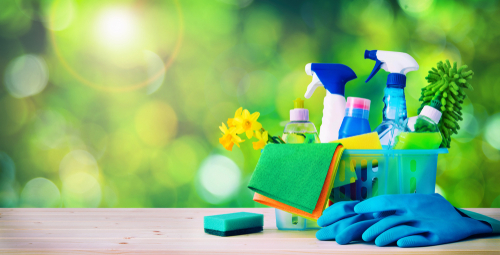Where Should You Store Cleaning Chemicals

Maintaining a clean and healthy living or working surroundings usually call for the usage of several cleaning agents. Inappropriate storage could cause unintentional leaks, spills, and harmful reactions between incompatible chemicals. Moreover, simple access by dogs or youngsters might cause major health risks. Thus, guaranteeing the safety and well-being of every member of the household or business depends mostly on knowing the best methods for keeping cleaning agents. This page will explore the key rules for the orderly and safe storage of cleaning chemical supplies, so offering useful guidance to assist you in safeguarding your house, belongings, and family or pets.
Safety First: Preventing Chemical Reach
Making sure cleaning chemicals are absolutely unavailable to children and pets is the most important consideration in storage. Their natural curiosity and inclination to explore with their mouths make them especially susceptible to unintentional intake or touch with dangerous chemicals. If improperly used, even apparently benign cleaning solutions might cause major irritation or toxicity. The best minimal safety measure is thus keeping all cleaning agents in high, locked cupboards or closets. Even under supervision, these storage spaces should be out of young children’s direct line of sight and reach as well as that of pets. Check often that these storage spaces are securely locked and that separate and safe locations house keys or access codes.
On lower cabinets or drawers where cleaning chemicals could unintentionally be stored, think about adding kid safety locks. These extra levels of security can offer vital defense against unintentional access. Older children should be taught the risks associated with cleaning chemicals and the need of never handling them without adult supervision.
Preserving appropriate temperature and ventilation
Maintaining the safety and effectiveness of cleaning agents depends also much on the surroundings in which they are kept. In particular if containers leak or are not well sealed, poor ventilation can cause toxic fumes to build up. The respiratory system may find these vapors annoying, and occasionally they might cause a fire hazard. Choose hence places for storage that allow free air circulation by being well-ventilated. Store chemicals in enclosed areas with poor ventilation, including tightly sealed basements or unventilated closets, away from make sure the garage or utility area you are storing chemicals in has enough ventilation to help to dissipate any possible odors.
Some compounds may break down, lose their potency, or even become more volatile and prone to leaks or explosions at too high temperatures. On the other hand, freezing temperatures can also ruin some cleaning agents, separating or rendering them useless.
Guaranteeing correct container integrity and labeling
Safety depends on the original labeling on cleaning chemical containers being maintained. These labels give essential details on the composition, correct use, possible risks, and first aid guidelines of the product in case of unintentional contact. Never destroy or defile the original labels. Should a cleaning product be moved to another container—which is usually not advised—make sure the new container clearly and precisely labels the product name, dangers, and directions. Still, it’s ideal practice to keep cleaning agents in their original, correctly sealed containers.
Correct storage of cleaning chemical supplies is not only a matter of neatness; it is a basic component of household and occupational safety. Establishing and regularly following these rules can help to greatly lower the chance of mistakes, safeguard the health and well-being of those around you. Proper and orderly storing cleaning products is an investment in a safer and healthier environment for all.
![HITV APP Download [Apk] Latest Version [Unlimited Movies]](https://hitvofficial.com/wp-content/uploads/2024/06/cropped-HiTV-Official-3.png)